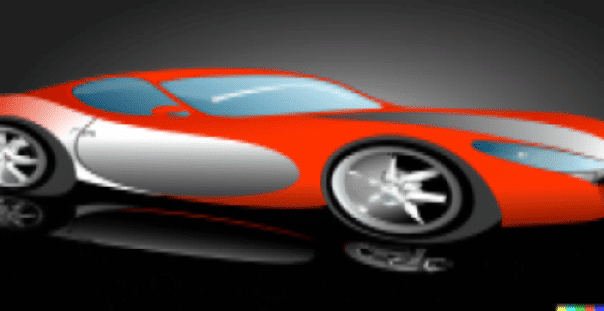Cleaning and Restoring Yellowed, Hazy Headlight Lenses
Are your car’s headlights yellowed, cloudy, or scratched? You’re not alone. Unless you give your car’s plastic headlight lenses regular care, in 24 months or less they can deteriorate to the point of being completely opaque, making it very dangerous to operate your vehicle at night and in reduced visibility conditions. The solution is easier than you might think. The good news is that you can restore this dangerous and unsightly problem in about 20 minutes. It’s easy once you know how.
Why Do Headlights Become Yellow and Dull?
The problem is not caused by abuse or neglect, as you might think. It is an environmental problem. Without regular maintenance, UV rays from the sun, acid rain, salt, and road debris degrade and discolor all clear plastics, including lens covers. If your vehicle has halogen or another type of high-intensity discharge (HID) headlamp, the problem can be worse. These sealed beam units operate at high temperatures, further contributing to degradation and yellowing.
What Is The Solution?
The solution is an easy restoration process. Headlight restoration is a plastic repair process that removes surface damage and restores clarity to the lenses. Even severe cases of yellowing, hazing, and scratches can be fixed in less than 30 minutes.
You might be wondering why fix instead of replace. Your headlights are a sealed unit, so you can’t just replace the outer cover. If you have an expensive car with high-performance lighting, replacement is very expensive. Restoration versus replacement can save you $150 to $600 per lens, so it’s well worth the effort. Plus, it’s easy!
What kind of results can you expect? It may look hopeless, but most likely the damage is superficial. Even if your light covers are completely opaque, they can be restored. As long as the plastic has not yellowed all the way though, you have a very good chance of full restoration.
Try A Low Abrasive Polish First
If the damage is slight, you may be able to fix it with a simple plastic polish like Meguiar’s PlastX. I recommend trying this method first. It won’t be a wasted effort or expense, either, because you need to use the polish regularly to maintain your lighting.
NOTE: Never use a household glass cleaning product like Windex on clear plastic. Household glass cleaners contain ammonia, which causes clear plastic to yellow.
If the polish alone does not work, then you need to remove the damage with very fine sandpaper (2000 grit is very safe) and re-polish to restore a clear finish. While it may sound scary or complicated, it’s not. Wet sanding is quick and easy.
TIP: You can test to see if your headlights will respond to hand polishing with a small dab of tartar control toothpaste. The toothpaste is slightly abrasive. If the small test area vastly improves, then you know polish alone may be all you need.
Sandpaper & Re-polish Procedure
To clean away the damage with wet sanding and re-polish, you need the following supplies:
- Polishing towels
- Bucket of soapy water
- Latex gloves (if you have sensitive skin)
- Painter’s masking tape (1″ to 1.5″ width is best)
- Plastic polish
- Wet/dry sandpaper (600, 1200, 2000 grit)
- Sanding block (1″ x 2″ erasure works great)
- 2.5″ Velcro backing plate for use with 3/8″ drill or cordless drill
- 3″ foam or wool polishing pad with Velcro backing
Here are the correct steps for restoring plastic headlight lenses:
STEP 1: Clean the headlight lenses. A bucket of soapy water works best. Clean the surrounding area, too. Dry thoroughly.
STEP 2: Use the painter’s masking tape to mask around the headlight. This will help protect your car’s paint finish. This only takes a couple of minutes, so don’t skip this important step.
STEP 3: Wet sand each headlight. First, determine the amount of damage to each lens. If your headlight lenses are scratched or if they are completely opaque, you will need to start with 600-grit sandpaper. Sand thoroughly, and then progress to 1200, then 2000 grit.
If your lenses have no scratches and are only slightly opaque, you can probably get away with using 2000-grit paper only. The first sanding step is where you will remove the scratched and cloudy layer of plastic. The finer grades of sandpaper are to remove the scratches left from the previous grit sandpaper.
As you sand, your sanding water will turn milky. This is the damaged layer being removed. Use plenty of water for lubrication and to keep the sandpaper clean. Keep sanding until the surface feels perfectly smooth. The drippings will become clearer as the damage is taken away. Dry thoroughly between sanding steps to check progress.
STEP 4: Re-glaze headlight lenses using plastic polish on a 3″ polishing pad (foam or wool). First, connect the Velcro backing plate adapter to your drill.
Apply several dabs of polish to the pad and begin polishing the lens. As the polish begins to dissipate, add a little more and continue polishing. Stop polishing once the lens is completely clear again. Finish with a final hand polish using a small amount of polish on a microfiber towel or applicator.
STEP 5: Wax or seal to protect. Use good car wax to reseal the plastic and protect it from the elements.
STEP 6: Maintain monthly with a quality plastic cleaner/polish. The products I recommend most are Plexus and Meguiar’s PlastX. If polished regularly, your car’s clear plastic lenses will never need restoring!




